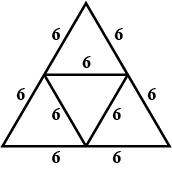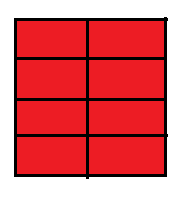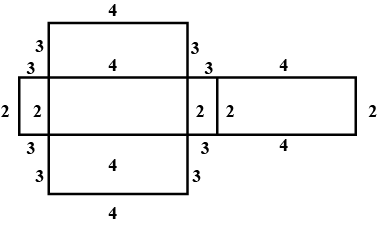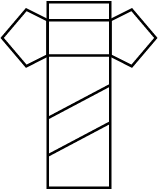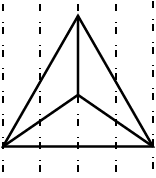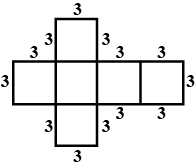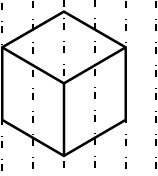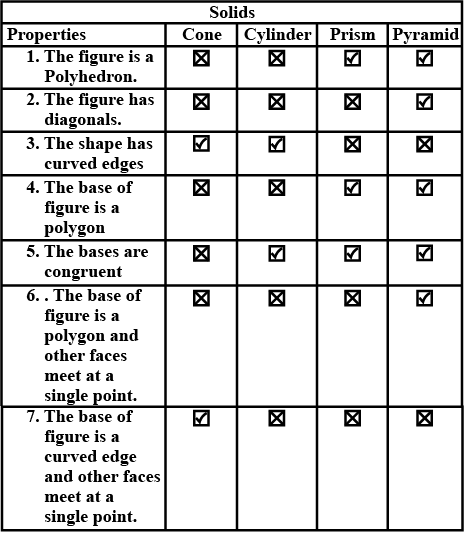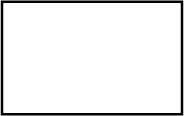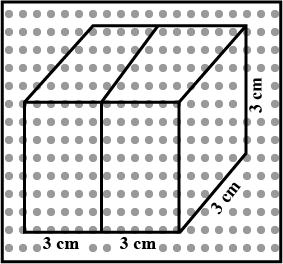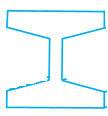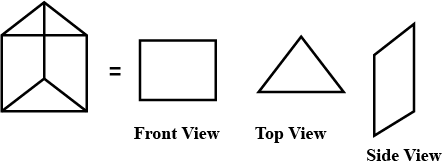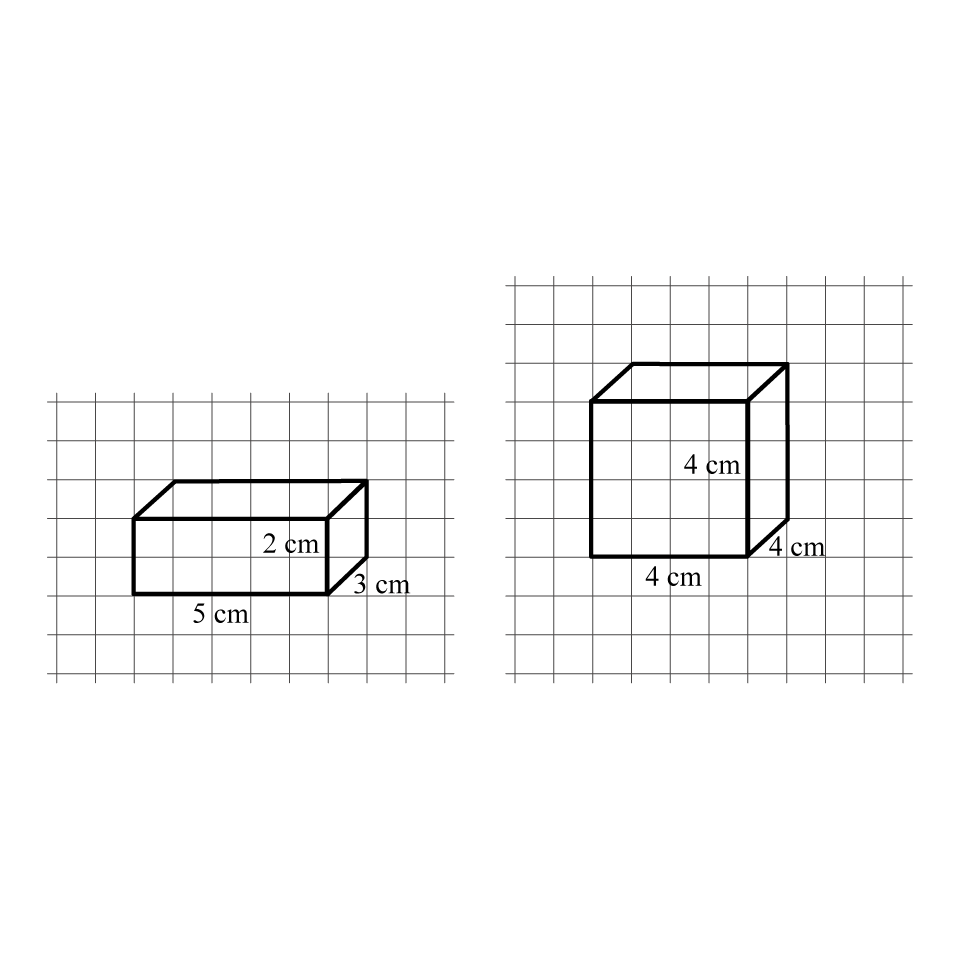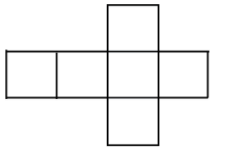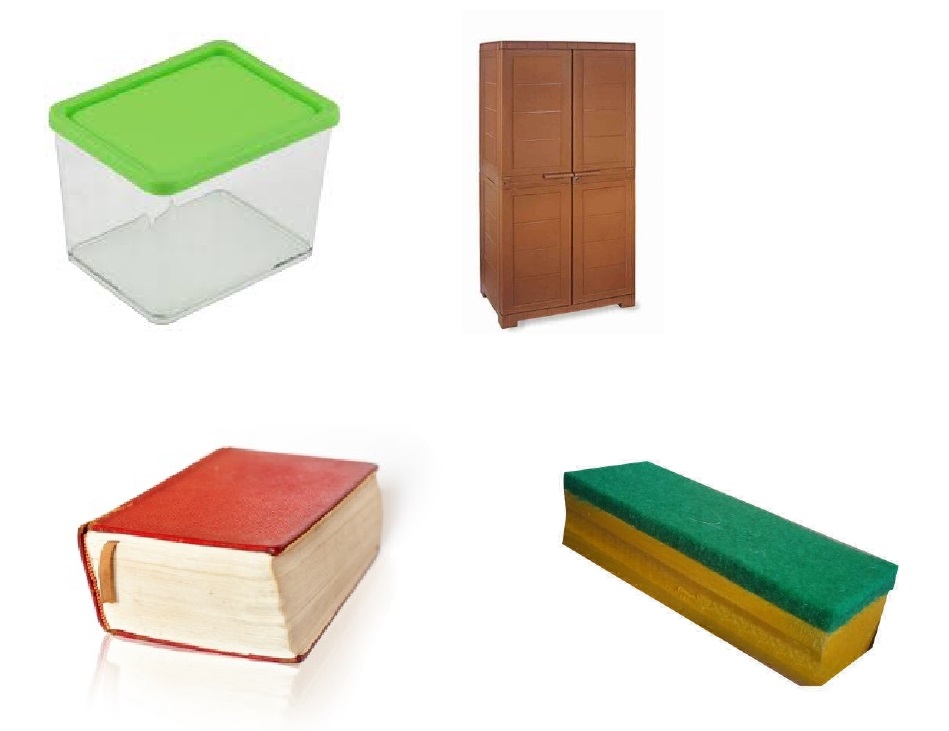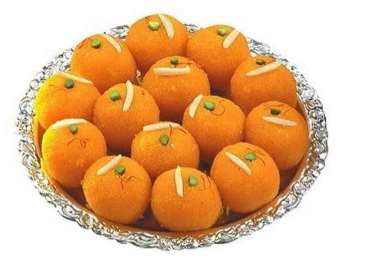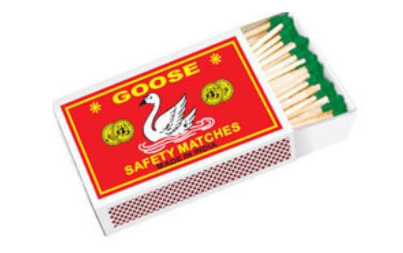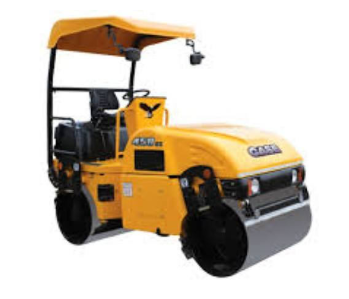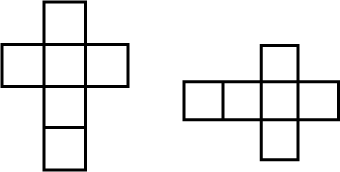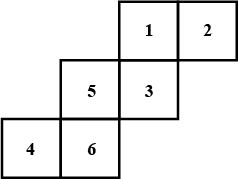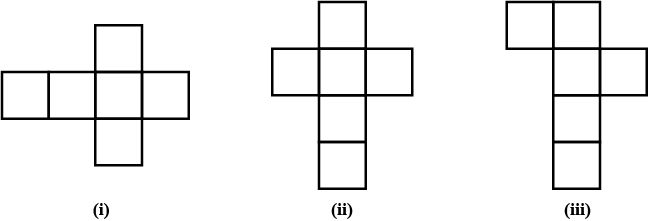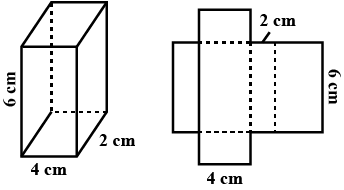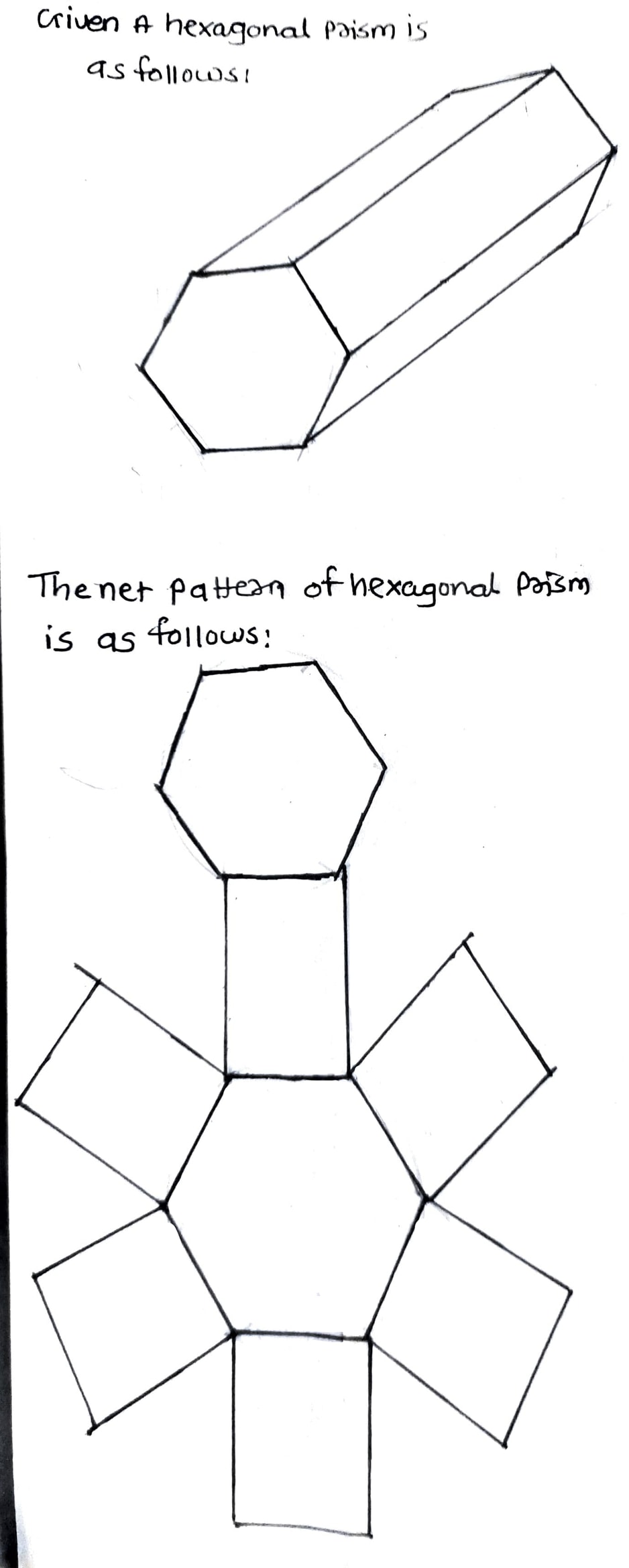Visualising Solid Shapes - Class 7 Maths - Extra Questions
The net of a rectangular prism has _______ rectangles. (Hint: Every square is a rectangle but every rectangle is not a square.)
Draw the net of a regular tetrahedron with side 6 cm.
If you look at this object from the top, what will you see?
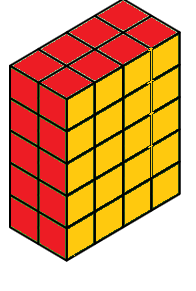
Dice are cubes with dots on each face. Opposite faces of a die always have a total of seven dots on them.
Here are two nets to make dice(cubes); the numbers inserted in each square indicate the number of dots in that box.
Insert suitable numbers in the blanks, remembering that the number on the opposite faces should total to $$7$$.
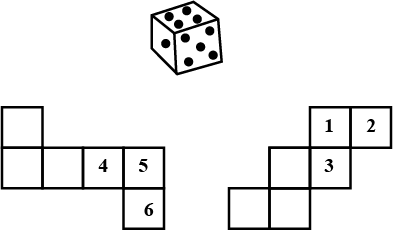
Define the following terms :
Discrete frequency distribution
Draw the net of the following cuboid:
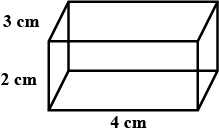
Draw the net of the following solid.
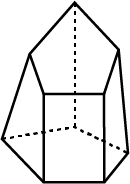
Use isometric dot paper to draw a tetrahedron
Draw the net of a regular hexahedron with side 3 cm. (Hint: Regular hexahedron - cube)
Use isometric dot paper to draw a square prism with side of 2 units
Identify if the net in the figure can be used to form a cube:

Complete the table given below by putting tick mark across the respective property found in the solids mentioned.
| Solids | ||||
| Properties | Cone | Cylinder | Prism | Pyramid |
| The figure is a polyhedron. | ||||
| The figure has diagonals. | ||||
| The shape has curved edges | ||||
| The base of figure is a polygon | ||||
| The bases are congruent | ||||
| The base of figure is a polygon and other faces meet at a single point | ||||
| The base of figure is a curved edge and other faces meet at a single point | ||||
Draw the net of the following shape.
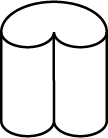
Two cubes, each with $$3 cm$$ edge, are placed side by side to form a cuboid. For this cuboid, draw an isometric sketch
Two cubes, each with $$3 cm$$ edge, are placed side by side to form a cuboid. For this cuboid, draw an oblique sketch
Draw front view of the diagram.
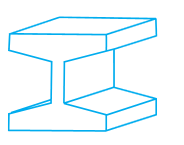
Sketch top, front and side view for the following diagram.
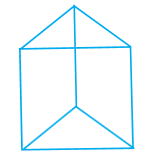
Identify if the net in the figure can be used to form a cube:
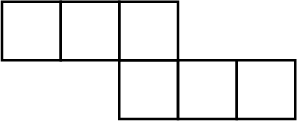
A bulb is kept burning just right above the following solids. Name the shape of the shadows obtained in each case. Attempt to give a rough sketch of the shadow. (You may try to experiment first and then answer these questions).
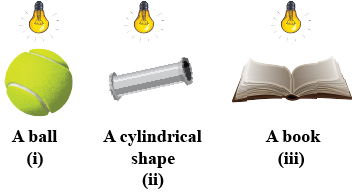
Give (i) an oblique sketch and (ii) an isometric sketch for each of the following:
(a) A cuboid of dimensions $$5\ cm, 3\ cm$$ and $$2\ cm$$. (Is your sketch unique?)
(b) A cube with an edge $$4\ cm$$ long.
Can any of the following be a net for a die? If no, explain your answer.

Draw nets for each of the following polyhedrons:
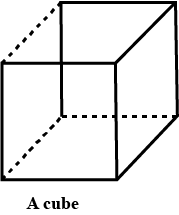
Name any four objects from your environment, which have the form of a cuboid.
Give two new examples of the following three dimensional shape:
Cuboid
What is the shape of:
a sweet laddoo
Out of the following four nets there are two correct nets to make a tetrahedron. Identify them.

What is the shape of:
a match box
Draw nets for each of the following polyhedrons:
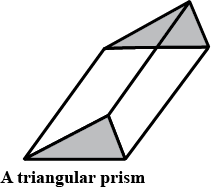
Define the following terms :
Frequency of distribution
What is the shape of:
a rod-roller
Here is an incomplete net for making a cube. Complete it in alleast two different ways.

The dimensions of a cuboid are $$6\ cm,\ 4\ cm$$ and $$3\ cm.$$ Draw two different types of oblique sketches for this cuboid.
Dice are cubes with dot or dots on each face. Opposite faces of a die always have a total of seven on them.
In the figure is given a net to make dice (cube), the numbers inserted in each square indicate the number of dots in it.
Insert suitable numbers in each blank so that numbers in opposite faces of the die have a total of seven dots.
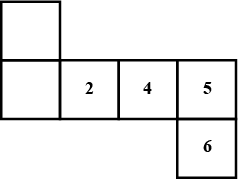
Dice are cubes with dot or dots on each face. Opposite faces of a die always have a total of seven on them.
In the figure, given a net to make dice (cube). The numbers inserted in each square indicate the number of dots in it.
Insert suitable numbers in each blank so that numbers opposite faces of the die have a total of seven dots.
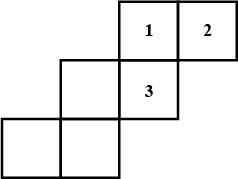
Identify if the net in the figure can be used to form a cube:
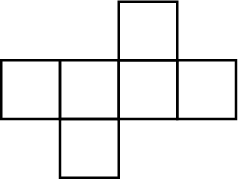
Draw at least three different nets for making cube.
Identify if the net in the figure can be used to form a cube:
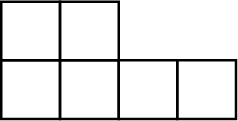
A cubical box is $$6cm\times 4cm\times 2cm$$ . Draw two different nets of it.
Identify if the net in the figure can be used to form a cube:
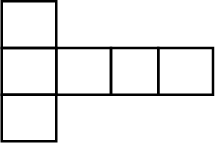
Fill in the blank:
____ sketch focus on the front view of an object.
The sheet which divides the paper in small equilateral triangle made up of dots or lines is called _______.
Draw nets for each of the following polyhedrons:
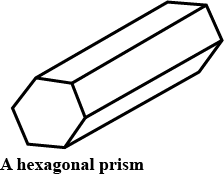
Class 7 Maths Extra Questions
- Algebraic Expressions Extra Questions
- Comparing Quantities Extra Questions
- Data Handling Extra Questions
- Exponents And Powers Extra Questions
- Fractions And Decimals Extra Questions
- Integers Extra Questions
- Lines And Angles Extra Questions
- Perimeter And Area Extra Questions
- Practical Geometry Extra Questions
- Rational Numbers Extra Questions
- Simple Equations Extra Questions
- Symmetry Extra Questions
- The Triangle And Its Properties Extra Questions
- Visualising Solid Shapes Extra Questions
